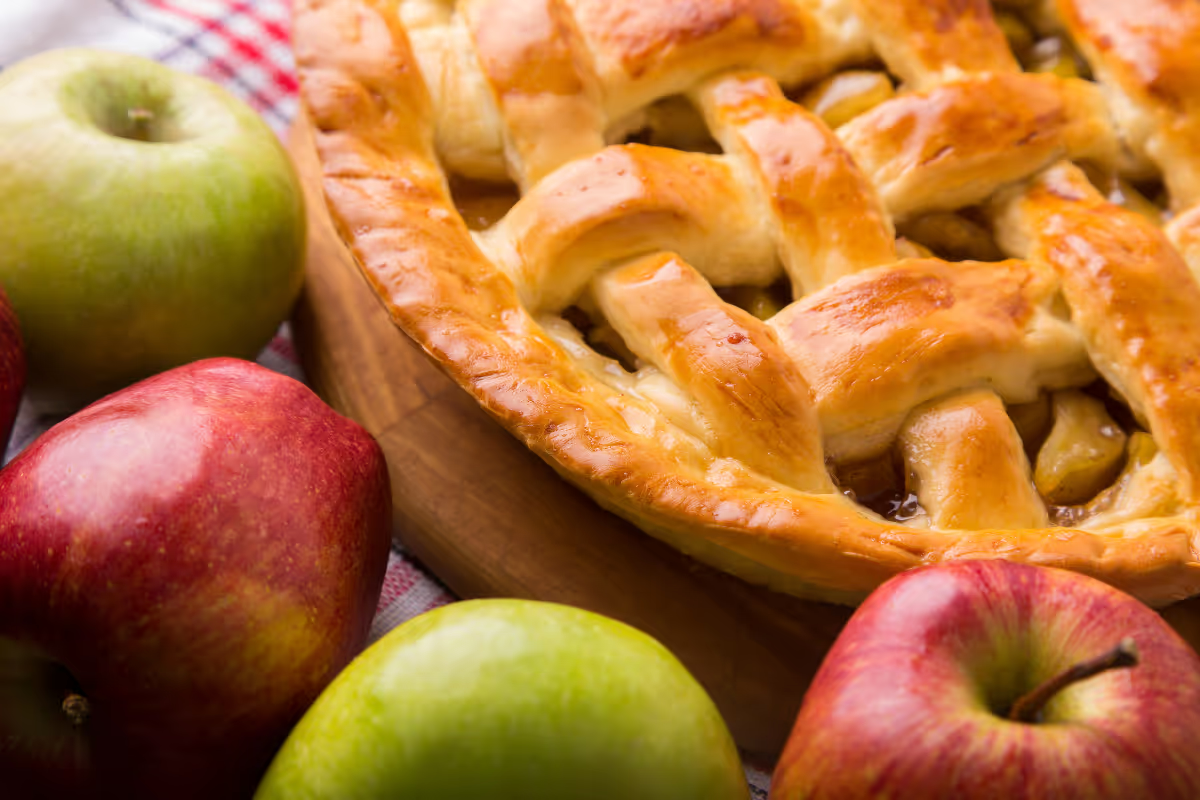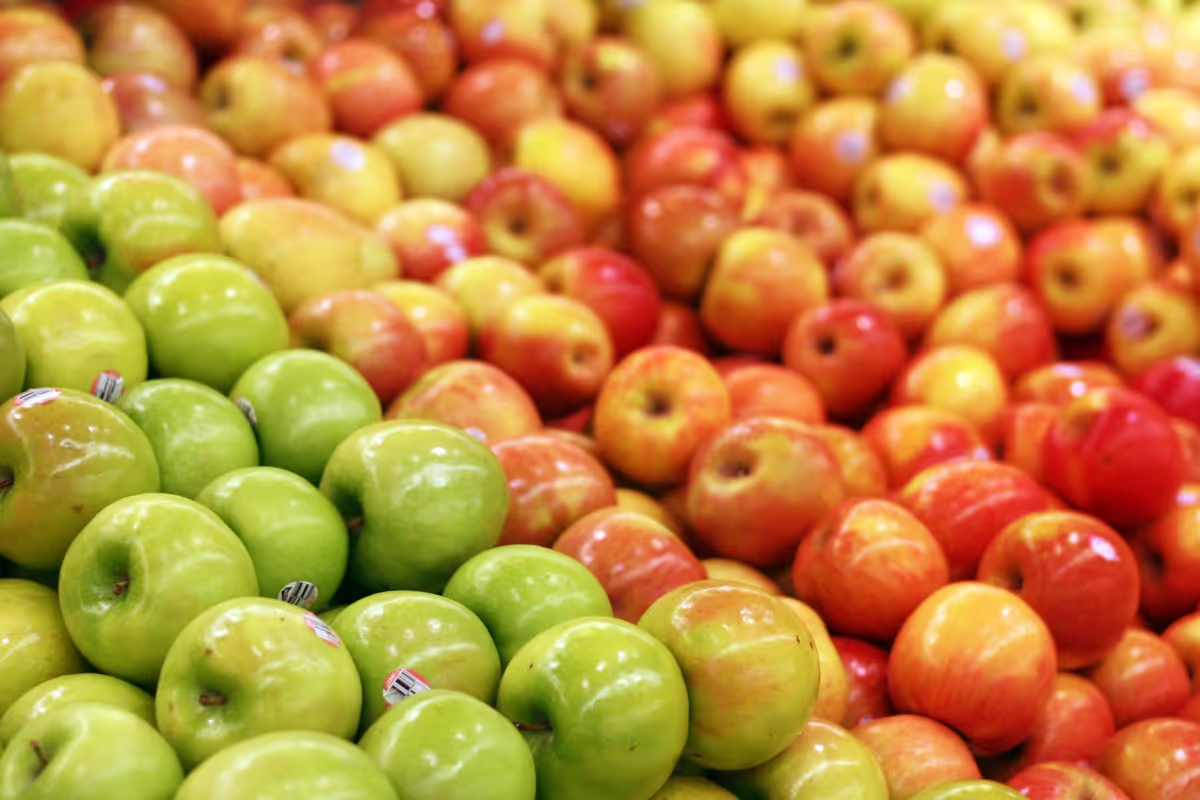How to Pick the Perfect Apples for Baking: 10 Best Varieties and 4 to Avoid

Apples are the ultimate fruit for fall and winter baking. They can transform any dessert into a cozy, comforting, and delicious treat. But not all apples are created equal when it comes to baking. Some apples are too soft, too sweet, or too bland to shine in the oven.
So how do you know which apples are best for baking? We’ll share some tips and tricks to help you pick the perfect apples for your recipes. We'll also give you a list of the 10 best apples for baking, as well as ones to avoid, so you don't end up with a disappointing dessert.
Why Some Apples Are Good for Baking and Others Aren't
When picking apples for baking, you have to consider two main factors: flavor and texture. You want apples that have a balance of sweetness and tartness, and a complex and aromatic flavor that can enhance the spices and sugar in your recipes. You also want apples that have a firm and crisp texture, and that can retain their shape and structure when cooked. Some apples are just too sweet or bland tasting, while others have too delicate of a texture to hold up to the heat.

The 10 Best Apples for Baking
Honeycrisp: These apples are sweet, crisp, and juicy, with a honey-like flavor and a hint of tartness. They are great for eating fresh, but they also hold their shape well when baked. They are ideal for pies, crisps, and cakes.
Braeburn: These apples are sweet-tart, with a rich and spicy flavor. They have a firm and dense texture that can withstand high temperatures. They are excellent for pies, tarts, and cobblers.
Granny Smith: These apples are the classic choice for baking. They are very tart, with a bright and tangy flavor. They have a hard and crunchy texture that softens but doesn't collapse when cooked. They are perfect for pies, muffins, and breads.
Pink Lady: These apples are sweet-tart, with a floral and fruity flavor. They have a crisp and juicy texture that stays firm when baked. They are wonderful for cakes, cookies, and bars.
Spartan: These apples are a cross between McIntosh and Newtown apples, and have a sweet-tart and vinous flavor. They have a crisp and juicy texture that remains firm when baked. They are a good all-purpose apple, and work well in pies, cobblers, and crisps.
Jonagold: These apples are a cross between Jonathan and Golden Delicious apples, and have a sweet and tangy flavor. They have a firm and crisp texture that holds up well when baked. They are suitable for pies, cakes, and tarts.
Cortland: These apples are juicy and slightly tart, with a bright red skin and snowy white flesh. They have a tender and smooth texture that cooks down to a soft consistency without turning to mush. They are great for pies, cobblers, and crisps.
Crispin: These apples are also known as Mutsu, and have a sweet and juicy flavor with a hint of citrus. They have a crisp and crunchy texture that keeps its shape when baked. They are good for pies, tarts, and sauces.
Jazz: These apples are a cross between Braeburn and Royal Gala apples, and have a sweet and tangy flavor with a hint of spice. They have a firm and crisp texture that stays crunchy when baked. They are good for pies, cakes, and salads.
Ida Red: These apples are a cross between Jonathan and Wagener apples, and have a sweet and tart flavor with a hint of raspberry. They have a firm and crisp texture that softens but doesn't lose its shape when baked. They are good for pies, breads, and sauces.
Apples Not to Use in Baking
These are some of the apples that you should avoid when baking, because they have a poor flavor or texture for baking. They are better suited for eating fresh or juicing.
Gala: These apples are mildly sweet, with a floral and vanilla flavor. They have a fine and delicate texture that softens and breaks down when cooked. They are too mushy and watery for baking, and won't hold their shape or structure in your recipes.
Red Delicious: These apples are very sweet, with a bland and watery flavor. They have a soft and mealy texture that turns to mush when baked. They are not recommended for baking at all.
McIntosh: These apples are sweet-tart, with a mild and aromatic flavor. They have a tender and juicy texture that breaks down easily when cooked. They are good for applesauce, but not for baking.
What About Fujis?
There are a lot of varying opinions about whether or not Fuji apples are good for baking. They do have a fantastic texture that holds up really well in the oven. They are exceptionally sweet, which definitely makes them a fantastic snacking apple. But, for my tastes, they’re a little too sweet and one-dimensional to really shine in baking. I prefer apples with less sugar and more complexity.
That being said, you absolutely can bake with them, though I’d recommend reducing the amount of sugar in your recipe to compensate for that sweetness, or pair them with a tarter apple to add some depth to the flavor.
How to Prep Apples for Baking
Prepping apples for baking involves a few simple steps. Here are some tips to help you get the best results.
Peel the Apples: We prefer to peel our apples for most of our apple recipes, as the peel can be tough and bitter when cooked. The exception is when we make a baked apple, where the peel helps keep the apple intact. To peel an apple, use a sharp paring knife or a vegetable peeler, and work your way around the apple from top to bottom.
Core and Slice the Apples: To core an apple, you can use a special apple corer tool, or simply cut the apple into quarters and cut out the core from each piece. Whether you’re slicing or cubing them, be sure to get your pieces as close to the same size as possible to ensure they bake evenly.
Prevent the Apples from Browning: As soon as you cut an apple, it will start to brown due to oxidation. To prevent this, you can soak your sliced or cubed apples in water with some lemon juice or vinegar for a few minutes. This will also help strengthen the natural pectin in the apples, which will make your filling thicker and more stable.
Tips on Picking the Best Quality Apples for Baking
It stands to reason that the quality of your apples will affect the quality of your baked goods. Here are some tips on how to pick the best apples for baking.
Choose Apples that are in Season: Apples are available year-round, but they are at their peak from late summer to early winter. This is when they are the freshest, juiciest, and most flavorful. It also means that this is the ideal time to buy your apples in bulk and save your prepared pasties in the freezer for the months to come. Look for apples that are grown locally or regionally, as they will have less travel time and less chance of spoilage.
Look for Apples that are Firm, Smooth, and Shiny: Apples that are firm, smooth, and shiny are usually the best quality. Avoid apples that are soft, wrinkled, bruised, or dull. These are signs of overripe, damaged, or old apples.
Smell the Apples: Apples that have a strong apple aroma are usually the most flavorful. Avoid apples that have no smell or a sour smell. These are signs of bland or spoiled apples.
Ripen the Apples if Needed: Sometimes you may end up with apples that are not fully ripe, but you still want to use them for baking. In that case, you can try to ripen them faster by using ethylene, a natural gas hormone that fruits produce to speed up the ripening process. To do this, just place your unripened apples in a paper bag and secure the opening to trap in all of the ethylene gas. If you have a banana or two, you can add those in as well, as they produce a high volume of ethylene.
We hope this article has helped you learn how to pick the perfect apples for baking. Remember, the best apples for baking are the ones that have a balance of sweetness and tartness, and a firm and crisp texture. Try experimenting with different apple varieties and combinations to find your favorite flavors and textures. And don't forget to enjoy the fruits of your labor! Happy baking!
